In today’s fast-paced world, having a dedicated space for meditation can be a game-changer in finding your inner calm.
This listicle explores 21 inspiring ideas that will transform any corner of your home into an inviting zen oasis.
Whether it’s through color choices, natural elements, or unique decor, discover how to elevate your meditation practice with these stunning design concepts.
Stunning Meditation Room Ideas
1. Embrace Minimalism

A minimalist meditation room is all about simplicity and decluttering your space to foster a clear mind.
Opt for a few essential pieces like a meditation cushion, a small altar, and soft lighting. Neutral colors such as white, beige, and soft gray enhance the peaceful atmosphere. This approach allows you to focus solely on your meditation practice without distractions, aiding in achieving a state of tranquility. Minimalism also extends to your decor, where less truly is more, leading to an open and airy feeling.
2. Nature-Inspired Retreat
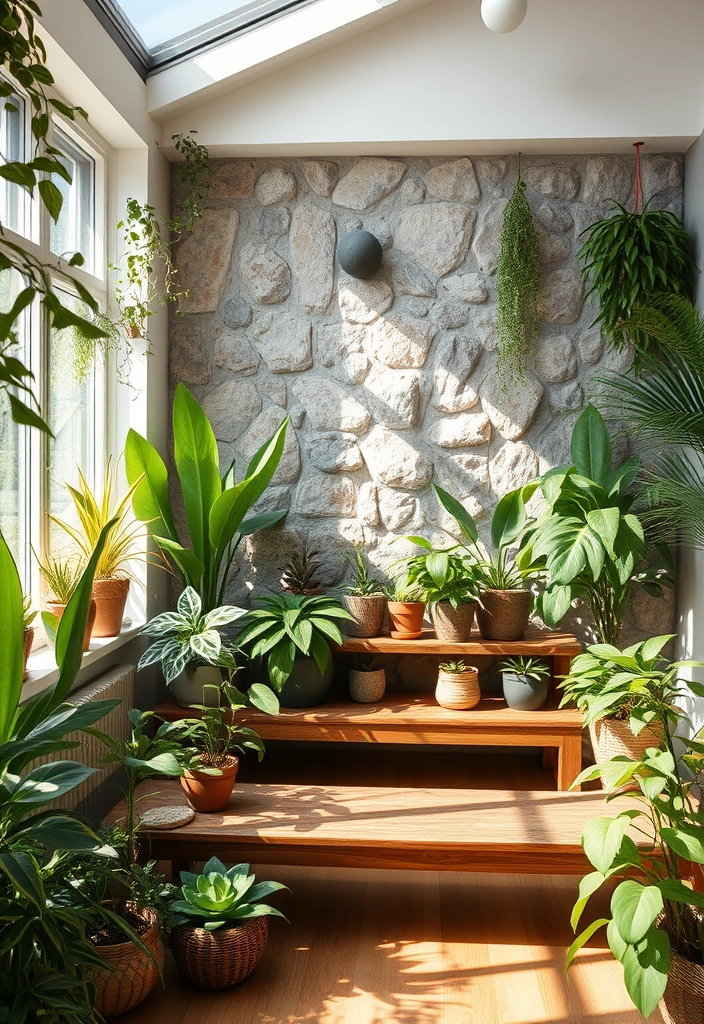
Bring the outdoors in by creating a nature-inspired meditation room that reflects the beauty of the natural world.
Incorporate elements like plants, natural wood furnishings, and stone accents. A living wall or hanging plants can add a vibrant touch while purifying the air.
Choose earthy tones and textures that evoke the feeling of being in a forest or garden. This connection to nature not only enhances the aesthetics but also promotes relaxation and mindfulness during your sessions.
3. Cozy Reading Nook
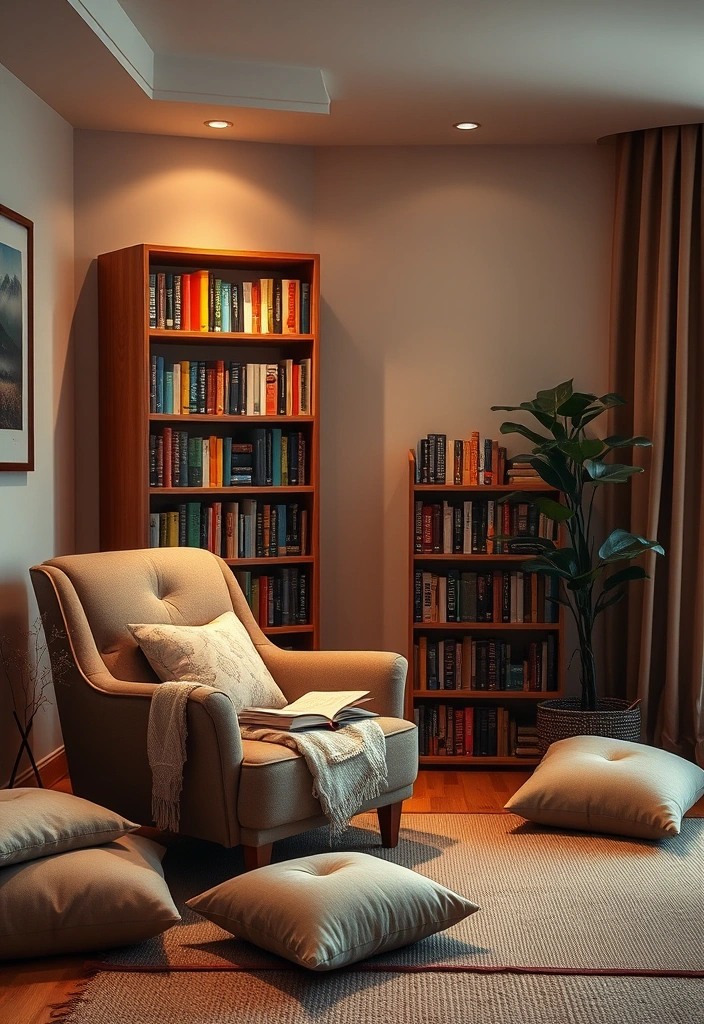
Transform a corner of your meditation room into a cozy reading nook to nurture both the mind and spirit.
Add a comfortable chair or floor cushions surrounded by shelves filled with inspiring books on mindfulness and spirituality. Soft lighting, perhaps from a floor lamp or fairy lights, can create a warm ambiance.
This space can serve as a perfect transition between meditation and reading, allowing you to reflect on your thoughts or simply enjoy a good book.
4. Soothing Color Palette

The right color palette can significantly affect your mood and meditation experience.
Opt for soft, muted colors like pale blues, greens, or lavenders that evoke feelings of calm and tranquility. Accent your walls with these hues, and consider using artwork or decor that complements your chosen palette.
A soothing color scheme not only beautifies your meditation room but also helps create a peaceful environment conducive to relaxation and focus.
5. Candlelit Serenity
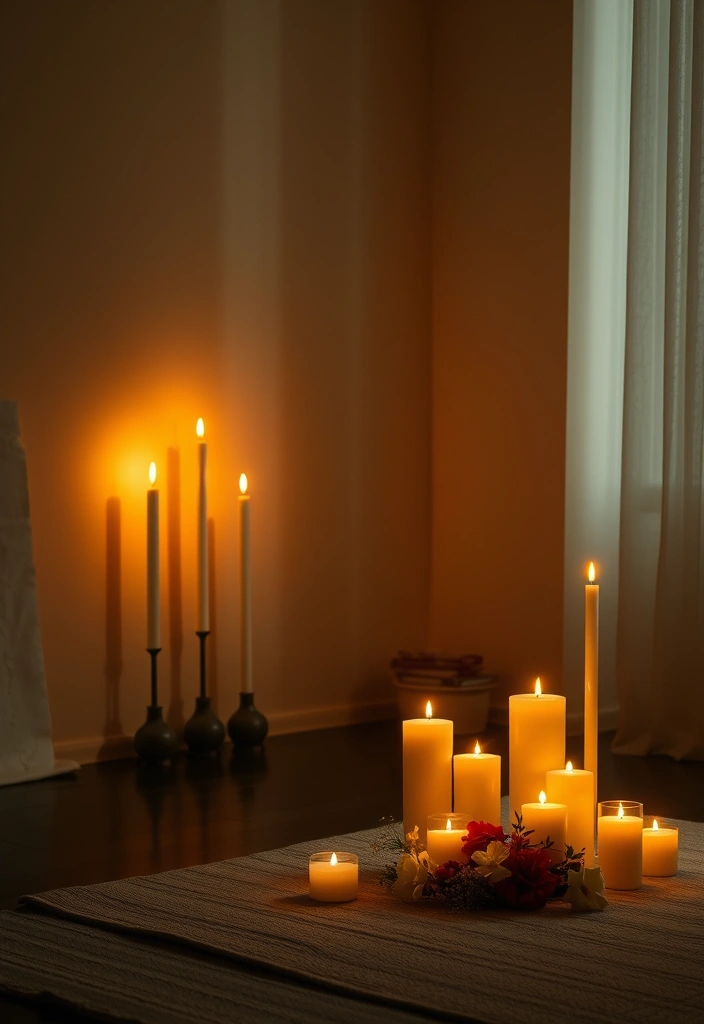
Lighting plays a crucial role in setting the mood for your meditation practice.
Incorporating candles can create a warm, inviting glow that fosters tranquility. Use various sizes and shapes of candles placed strategically around the room or on a dedicated altar.
Scented candles with calming fragrances like lavender or sandalwood can enhance the sensory experience, helping you to relax and center your thoughts during meditation.
6. Soft Textiles and Fabrics
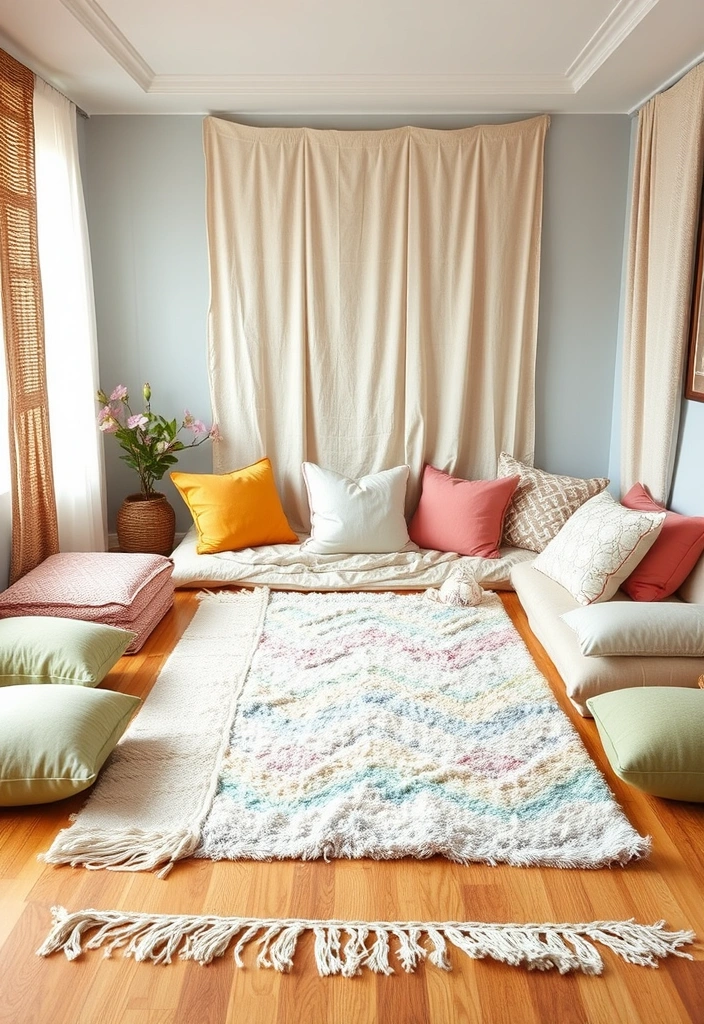
Introduce soft textiles and fabrics to create a comfortable and inviting meditation space.
Layer blankets, cushions, and rugs to add warmth and texture. Natural materials like cotton and linen not only feel good but also promote a sense of grounding.
Choose calming colors and patterns that resonate with you personally, making the space feel uniquely yours. A cozy environment can significantly enhance your meditation experience.
7. Peaceful Sound Elements
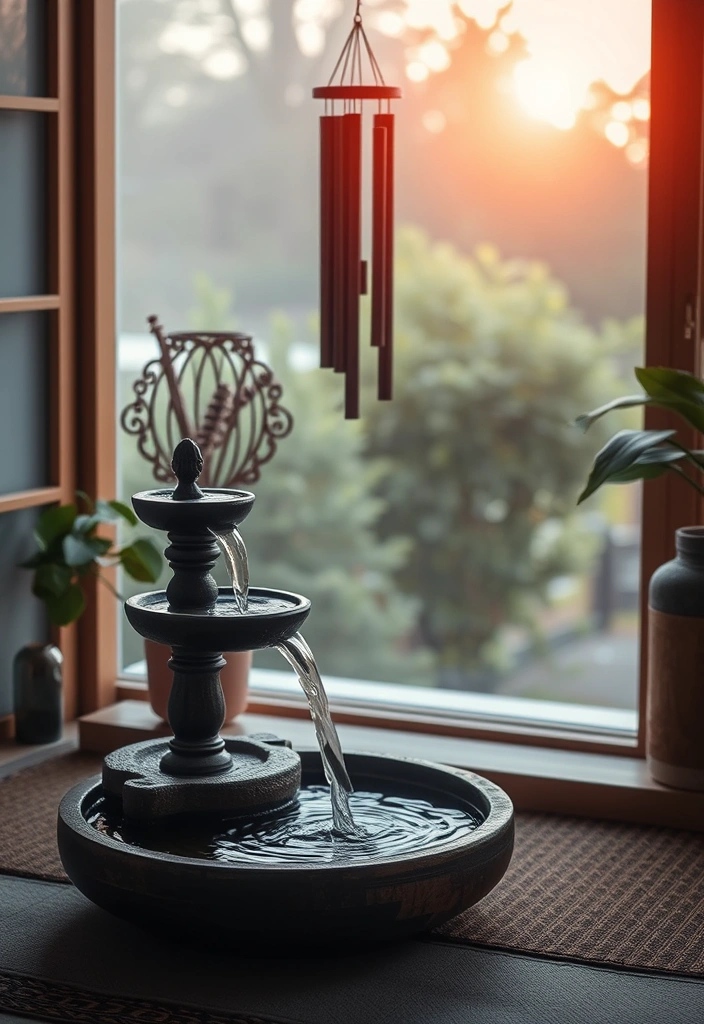
Incorporating sound elements can elevate your meditation practice and create a serene environment.
Consider adding a small water fountain for the soothing sound of flowing water, or wind chimes that gently tinkle in the breeze. Sound bowls or soft instrumental music can also contribute to a tranquil atmosphere.
These auditory elements can help drown out distractions and deepen your meditation experience by promoting relaxation.
8. Aromatherapy in Action
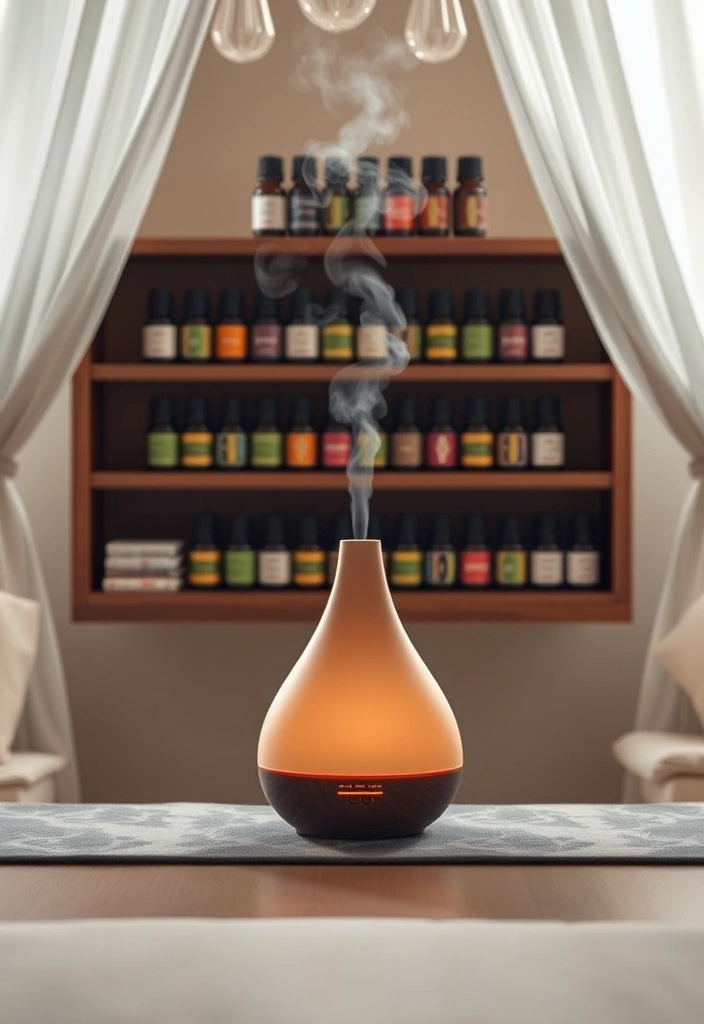
Enhance your meditation room with the power of aromatherapy to promote relaxation and mindfulness.
Utilize essential oil diffusers or scented candles with calming fragrances like chamomile or eucalyptus. Create a designated space for your oils, showcasing them beautifully while making them easily accessible. The right scents can significantly enhance your meditation experience, helping you to focus and unwind.
9. Spiritual Symbols and Artifacts
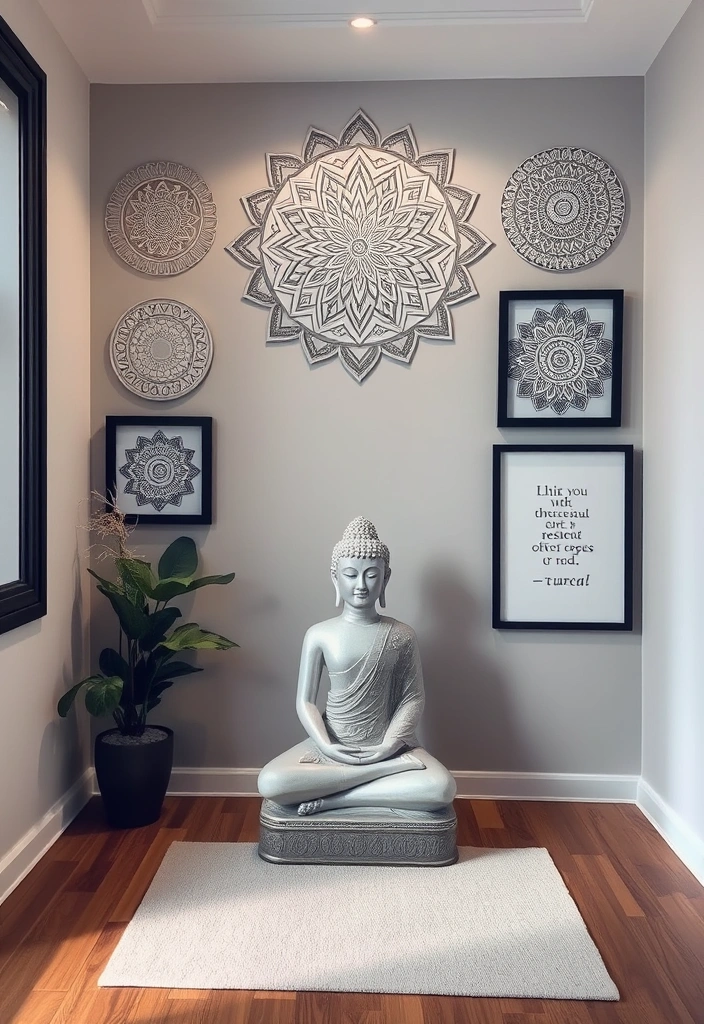
Incorporating spiritual symbols and artifacts can add depth and personal meaning to your meditation room.
Items like statues, mandalas, or meaningful quotes can serve as focal points that inspire reflection and mindfulness.
These elements not only enhance the visual appeal but also create an atmosphere that aligns with your spiritual goals. Select pieces that resonate with you and reflect your personal journey.
10. Create a Guided Space

Create a dedicated area for guided meditations or mindfulness practices within your meditation room.
Set up a comfortable seating arrangement with cushions and blankets, and use calming visuals like a projection of nature scenes or ambient light displays. This space can be a sanctuary for guided sessions, allowing you to immerse yourself fully in the experience. It adds a new dimension to your meditation practice and invites a sense of exploration.
11. Zen Garden Elements
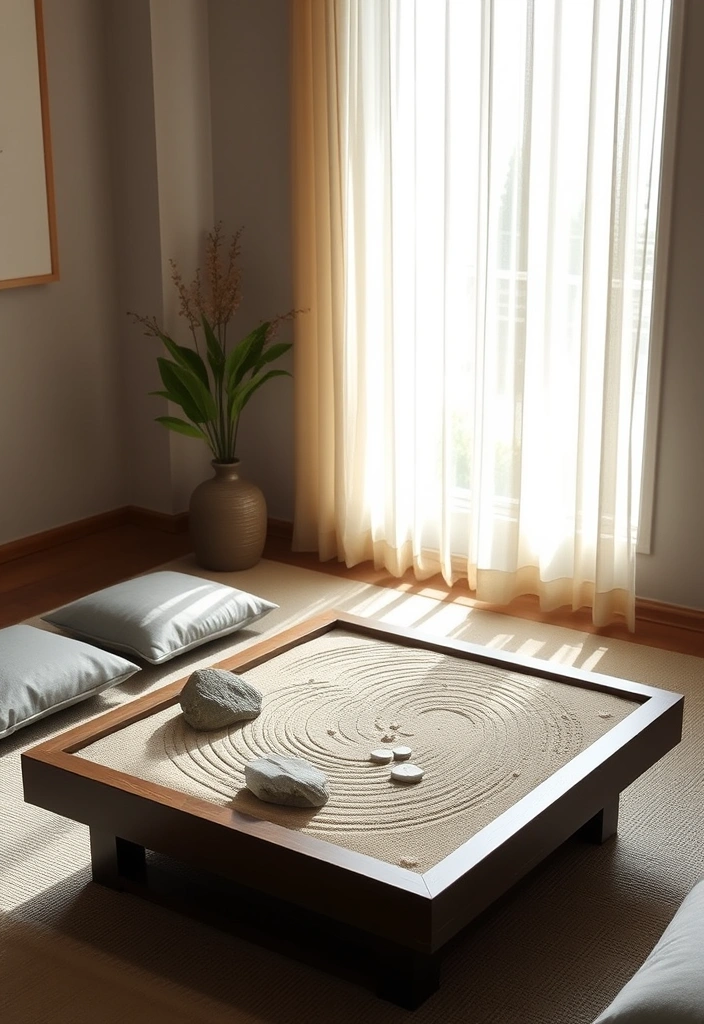
Integrate zen garden elements into your meditation room for a touch of tranquility and inspiration.
A small tabletop zen garden with sand and rocks can serve as a visual focal point, while also providing a meditative activity.
Arrange it thoughtfully, and allow the act of raking the sand to be a form of mindfulness practice. This unique addition can enhance the overall ambiance, inviting a deeper connection to your meditation experience.
12. Personal Touches
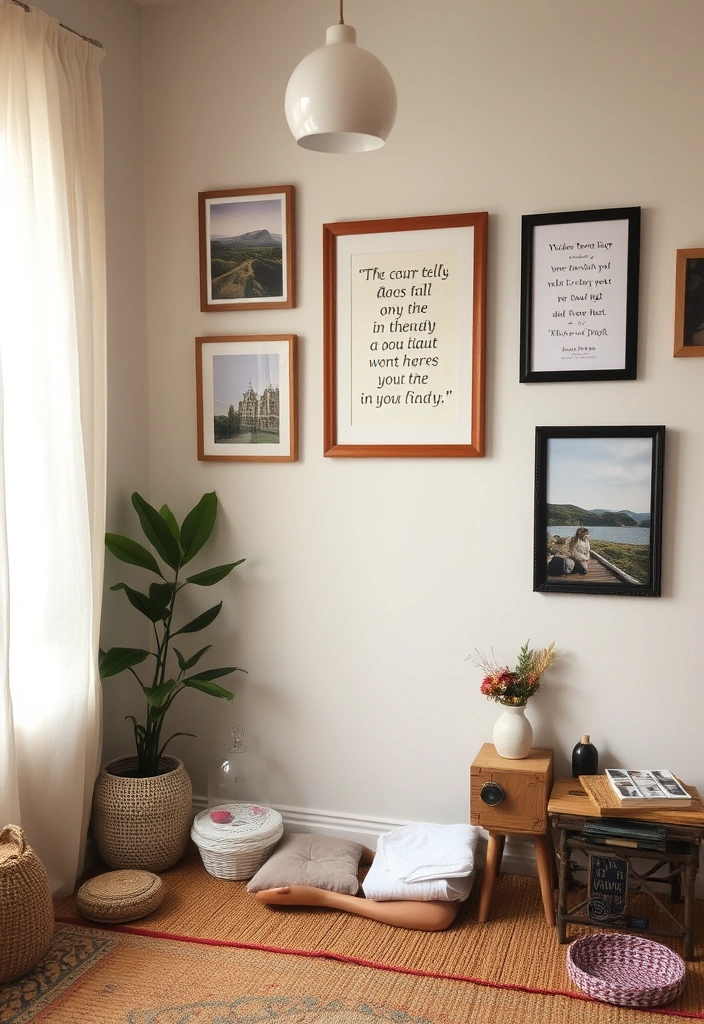
Incorporate personal touches that reflect your individual journey and experiences into your meditation room.
This can include photos, mementos from travels, or meaningful quotes that inspire you. The idea is to create a space that feels authentically yours, where each item serves as a reminder of your personal growth and aspirations. Personalization enhances your connection to the space, making it a true sanctuary for reflection.
13. Multi-Purpose Meditation Room
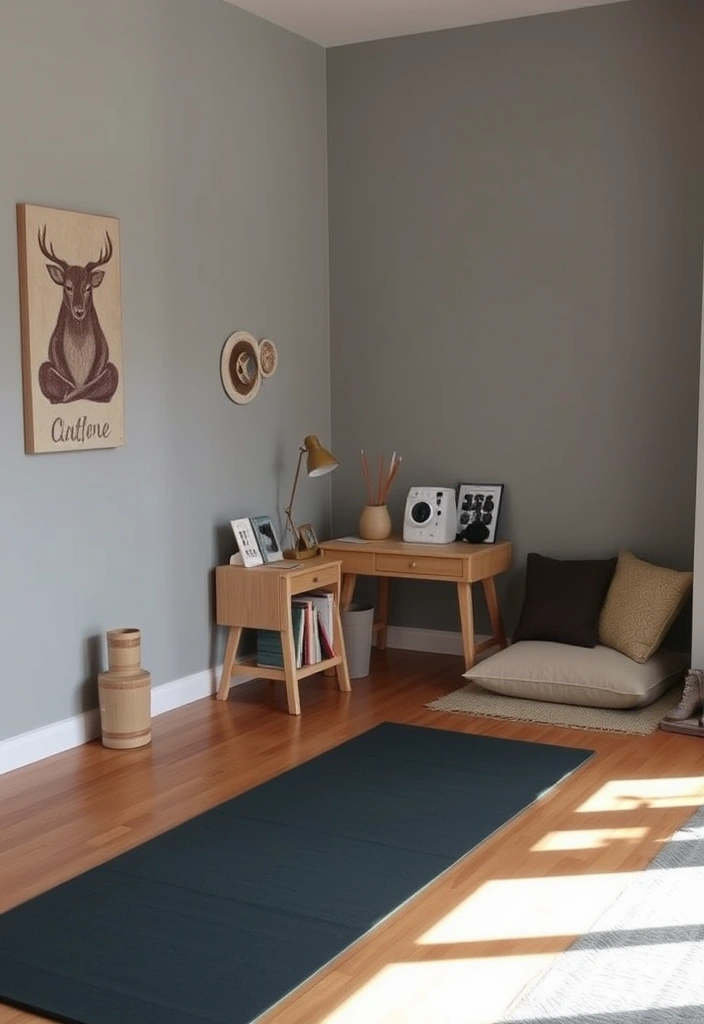
Design your meditation room to serve multiple purposes, making it a versatile space for relaxation and creativity.
Consider incorporating elements like a yoga mat, art supplies, or a writing desk alongside your meditation area. This multifunctional approach allows you to engage in various mindfulness practices, from yoga to journaling.
A room that serves different functions can inspire creativity while promoting a holistic approach to wellness.
14. Thoughtful Furniture Arrangement
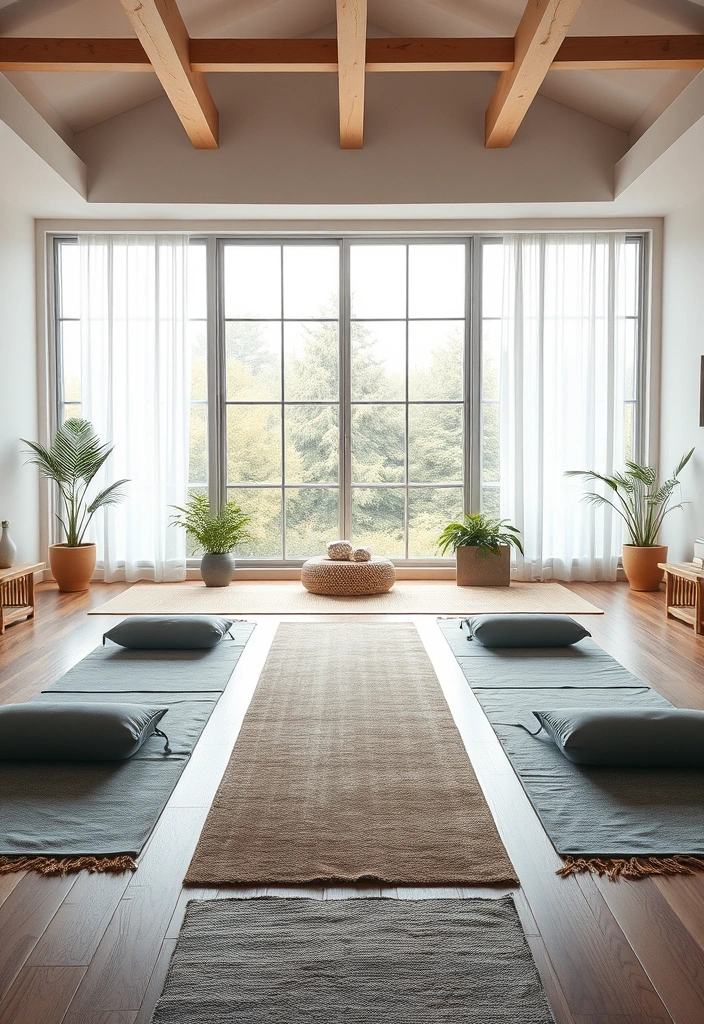
The arrangement of furniture can significantly impact the flow of energy in your meditation room.
Consider placing your meditation cushions facing a window to allow natural light to fill the space. Keep pathways clear and ensure that your layout encourages a soothing flow. Thoughtful arrangements can create a more inviting atmosphere, enhancing your experience when you step into your meditation oasis.
15. Outdoor Meditation Space

If you have outdoor space, consider creating an outdoor meditation area that connects you with nature.
A small deck or garden nook with comfortable seating surrounded by plants can become your personal zen retreat.
Incorporate elements like wind chimes, outdoor cushions, and soft lighting to enhance the experience. The sounds of nature can provide a calming backdrop, making your meditation practice even more enriching.
16. Incorporate Mirrors
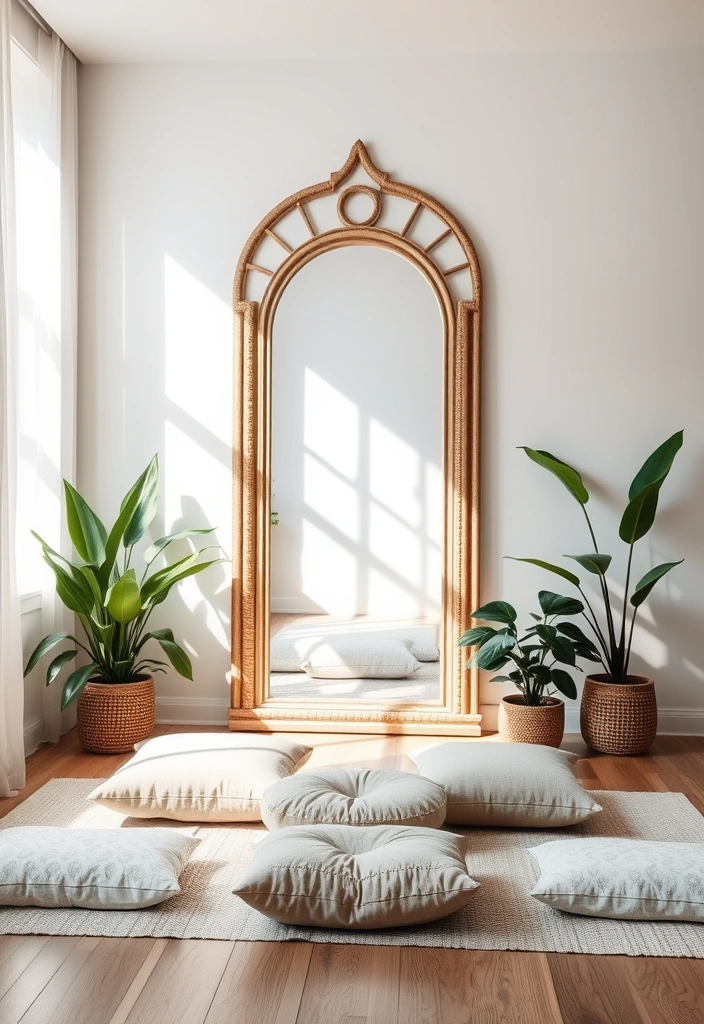
Using mirrors wisely can expand the visual space of your meditation room while promoting self-reflection.
A large mirror can make a small room feel larger and more open, helping to create an airy atmosphere. Place it opposite a window to maximize natural light or use smaller decorative mirrors to create a unique focal point. The reflective surface can also symbolize introspection, complementing your meditation practice.
17. Incorporate Healing Crystals
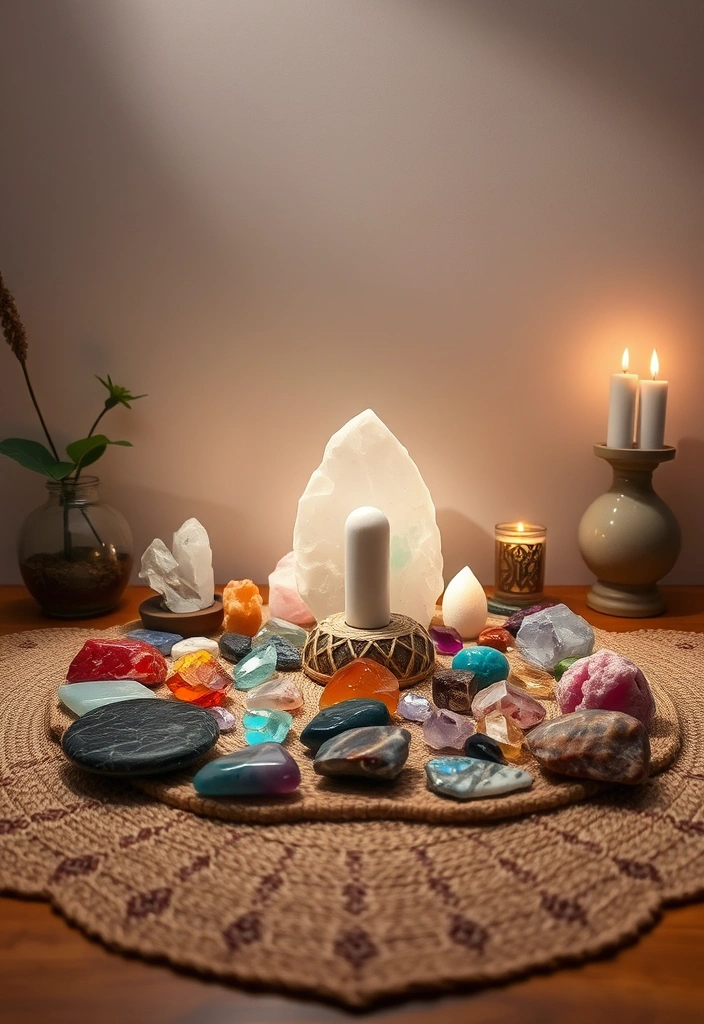
Integrating healing crystals into your meditation room can enhance your spiritual practice and create a calming energy.
Choose crystals that resonate with your intentions, such as amethyst for tranquility or rose quartz for love. Display them on your altar or around the room to create a balanced energy flow. The visual beauty of these stones also adds to the room’s decor, making it both functional and aesthetically pleasing.
18. Integrate Feng Shui Principles
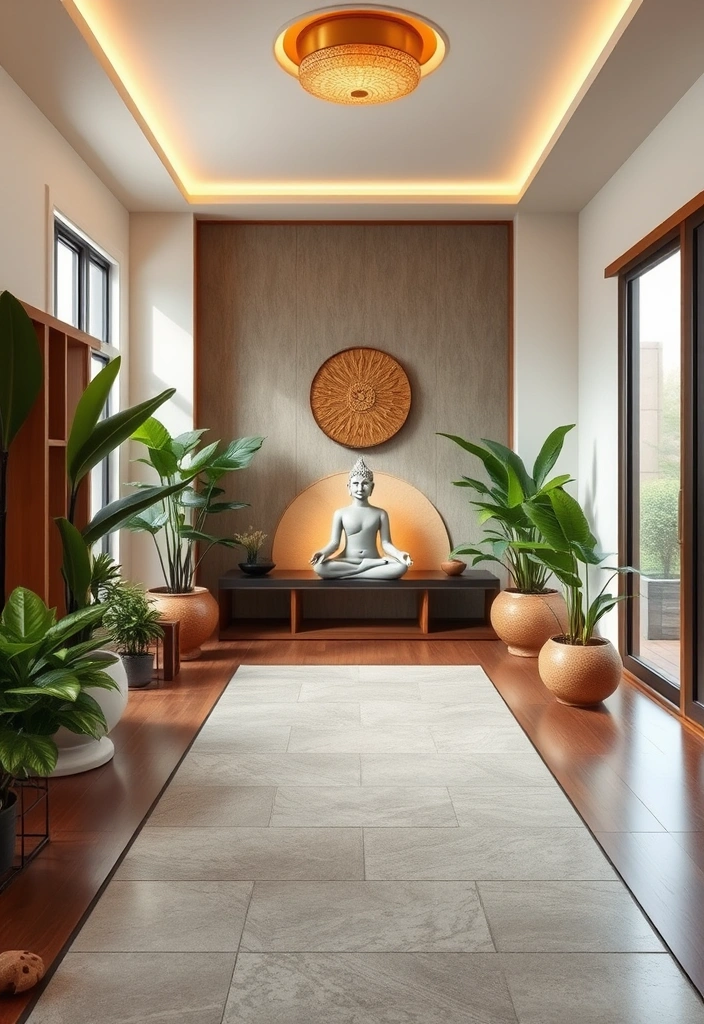
Understanding and applying Feng Shui principles can enhance the energy flow within your meditation room.
Position your meditation cushions in the ‘command position’ facing the door while keeping the space clutter-free. Incorporate elements of wood, water, and earth to create a harmonious balance. Feng Shui can help cultivate a sense of peace and clarity, making your meditation practice more effective.
19. Use Soft, Natural Lighting
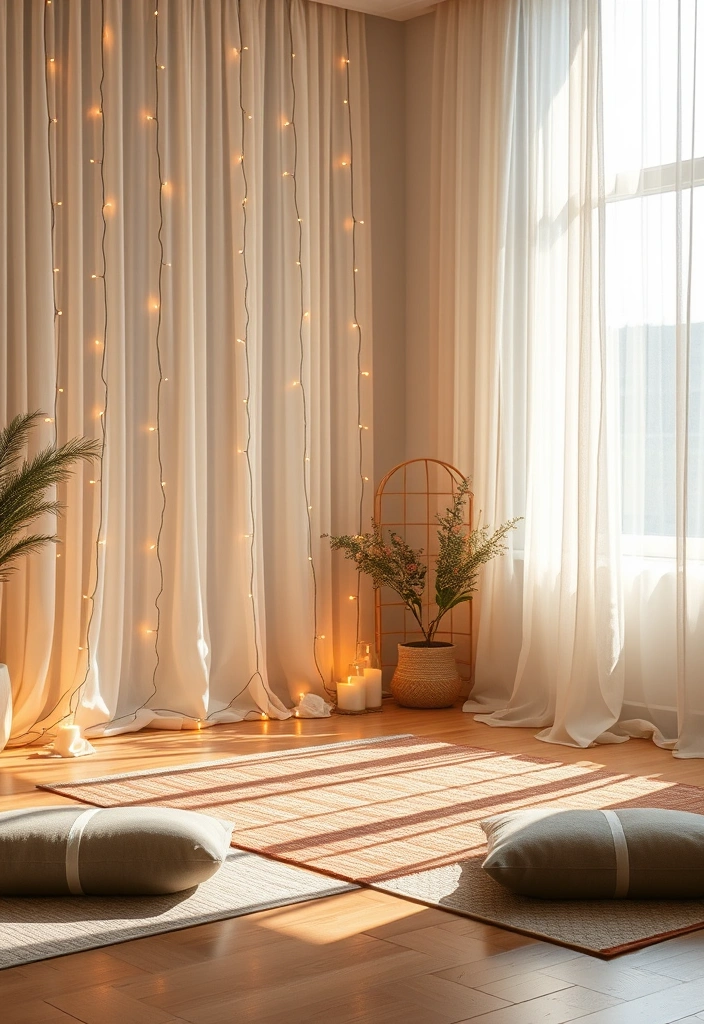
Soft, natural lighting is vital in creating a calming atmosphere in your meditation room.
Avoid harsh overhead lights and instead opt for lamps or fairy lights that offer a gentle glow. Position your space to take advantage of natural light during the day, and add adjustable lighting options for evening sessions. The right lighting can help settle your mind and create an inviting environment for meditation.
20. Create an Intention Board

An intention board can serve as a powerful visual reminder of your meditation goals and aspirations.
Dedicate a wall space for your board, filled with images, quotes, and affirmations that resonate with you. This visual display encourages mindfulness and helps keep your intentions front and center during each meditation session. It can be a beautiful way to track your personal growth and transformation.
21. Seasonal Decor Changes
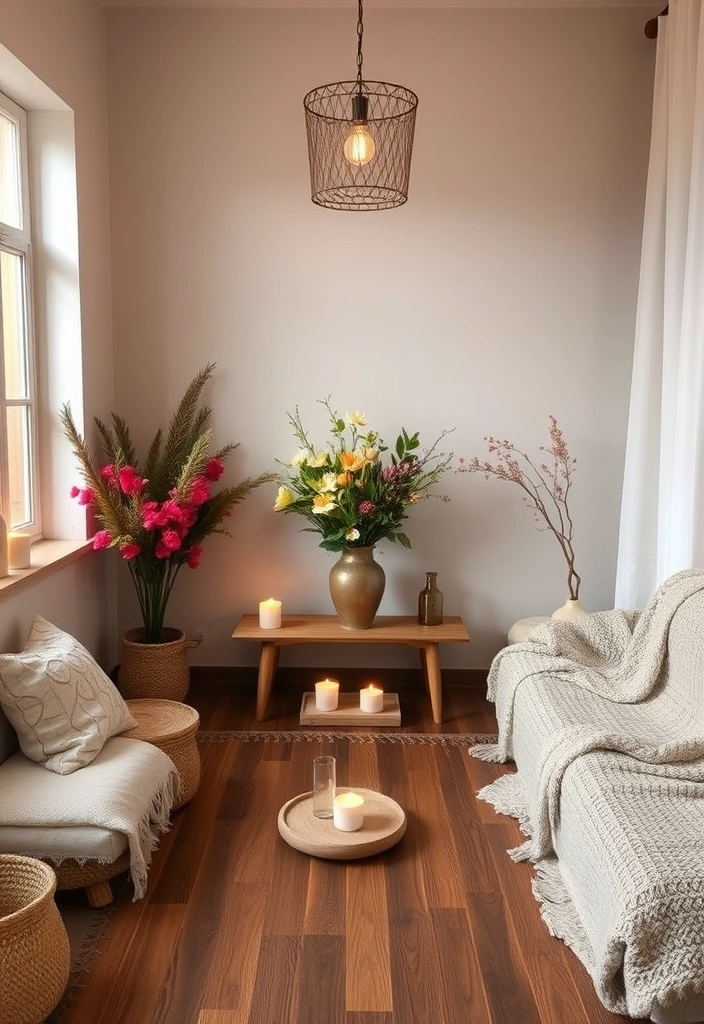
Refresh your meditation space with seasonal decor changes to keep the environment inspiring and dynamic.
Incorporate elements that reflect the changing seasons, such as floral arrangements in spring or warm textiles in winter.
This practice not only keeps your space visually stimulating but also encourages you to connect with the natural cycles around you. Changing decor can reignite your passion for meditation and help you stay engaged with your practice.
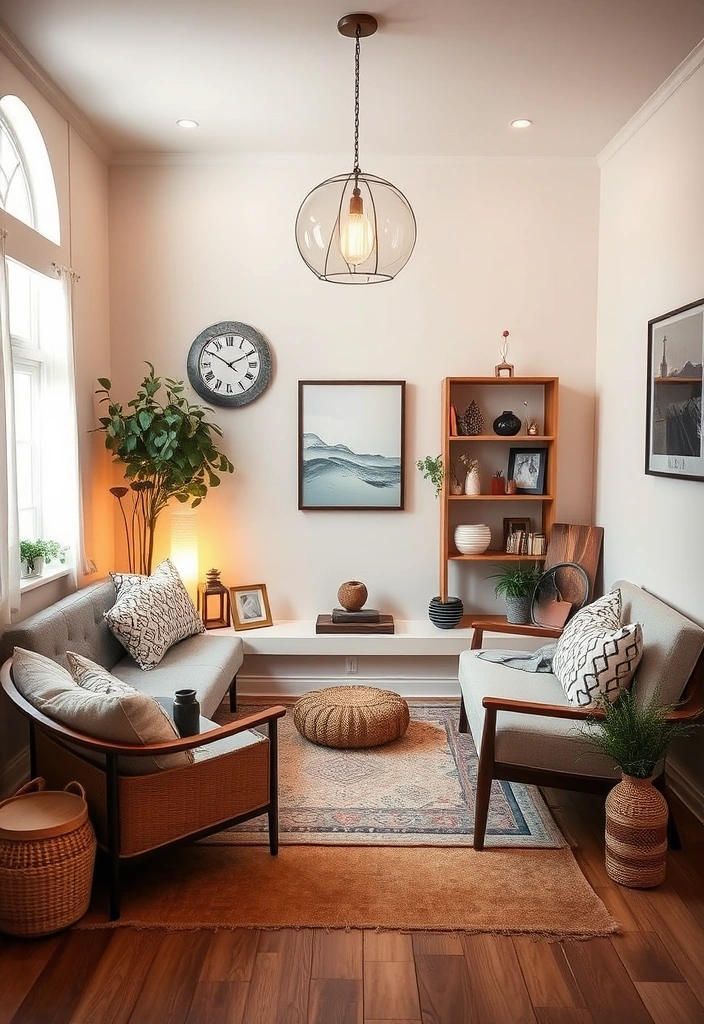
Creating your ideal meditation room is a deeply personal journey that invites peace and tranquility into your life.
By implementing these ideas, you can craft a space that resonates with your spirit and enhances your meditation practice. Remember, your meditation room should be a reflection of you, a sanctuary where you can retreat into calmness and clarity.
FAQ
What are the essential elements of a meditation room?
A meditation room should include comfortable seating, soft lighting, and calming decor like candles or plants. Choose neutral or earthy tones and incorporate soothing elements like a small fountain or essential oil diffuser.
Can I create a meditation space in a small room?
Yes, even a small corner can work as a meditation space. Use a floor cushion or yoga mat, add a small table for candles or crystals, and keep the area free of clutter to maintain tranquility.
What colors work best for a meditation room?
Soft, neutral tones like white, beige, or grey create a peaceful environment. You can also use calming hues like soft blues, greens, or lavender to enhance relaxation.
